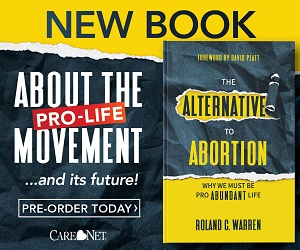Every time abortion pills are back in the news, you can count on some hot shot reporter taking the bait offered by the abortion industry and repeating carefully crafted but factually suspect claims that “mifepristone is safer than…” What it is allegedly safer than will include whatever popular, common drug that millions of Americans use every year without any significant concern for safety.
A while ago, it was Tylenol. We will review that claim momentarily, but we and others have answered that here. Now they are using penicillin and Viagra for comparisons. The claim is that mifepristone is four times safer than penicillin or ten times safer than Viagra
Of course, any discussion of this sort ignores the most obvious and serious safety issue with mifepristone: that someone dies every time the abortion drug is used successfully – the innocent unborn child who is the target of this “medication.”
Count these deaths and you’ve easily got the deadliest drug on record. Compared to healing, helping drugs like Tylenol, penicillin, and Viagra, the numbers aren’t even close.
The legacy media and mifepristone’s defenders don’t want you thinking about that though. They’d rather focus on the unintended (but rare) collateral damage that occurs when women (or men) take these or other common drugs familiar to patients, thinking that makes mifepristone look better by comparison.
Follow LifeNews on the MeWe social media network for the latest pro-life news free from Facebook’s censorship!
Looked at carefully, objectively, it won’t. Even without factoring in the hundreds of thousands of unborn lives lost each year when these abortion pills are taken, the evidence shows that mifepristone is clearly a more dangerous and deadly drug.
Reviewing the numbers with Tylenol
Basically, with Tylenol, they were trying to argue that there were more deaths associated with that widely used pain reliever every year than had been reported with mifepristone, But that ignores the fact that Tylenol was being sold and used tens of thousands of more times a year than mifepristone.
The risk of death with both Tylenol and mifepristone (at least for the mother) was small But considered in terms of deaths per dose, mifepristone was considerably more dangerous– about 833 times more lethal.
Again, find more details, data, and calculations here.
Though once repeated ad nauseam by the abortion industry’s media allies, with the exposure of their dubious mathematics, advocates have shifted course. They now attempt to compare misoprostol with other drugs, the most recent being Viagra and penicillin.
Safer than familiar prescriptions?
In a piece called “How safe is the abortion pill compared with other common drugs?”, CNN reporters Annette Choi and Will Mullery claim that
Comparatively, the risk of death by penicillin — a common antibiotic used to treat bacterial infections like pneumonia — is four times greater than it is for mifepristone, according to a study on life-threatening allergic reactions. The risk of death by taking Viagra — used to treat erectile dysfunction — is nearly 10 times greater, according to a study cited in the amicus brief filed by the FDA. (CNN, 12/13/23)
The sources for the chart accompanying this article stem from figures posted in reports in medical journals from 2000 and 2001 that offer some statements about deaths connected to penicillin or Viagra. These reports state that for every million uses, there are 5 deaths with mifepristone, 20 deaths with penicillin, and 49 with sildenafil (Viagra).
The data CNN cites for mifepristone comes from the FDA and is a couple of years old, missing some recent reports of deaths the FDA has connected to the drug. S we already know that the official risk assessment based on FDA figures is a bit higher (closer to 5.5 per million) than what CNN reports. There is still reason to believe that these figures may be vastly underestimated but let us deal with that later.
There is also reason, though, to question how accurate or current the figures CNN offers for penicillin and Viagra.
Penicillin is a proven lifesaver
CLINCALC.com says that there were 22,009,031 total prescriptions for Amoxicillin or Augmentin, the most popular penicillin formulations among 17,334,790 patients in 2020 (https://clincalc.com/DrugStats/Top300Drugs.aspx). Other varieties of penicillin include Ampicillin, Piperacillin, and Ticarcillin.
As many as 10% claim to be allergic to penicillin, but only about 1% to 5% of those taking the drugs report mild to moderate reactions like temporary rashes or asthmalike responses to the drugs. More serious reactions to the drugs, like anaphylaxis, which can include swelling, low blood pressure, abdominal pain, and difficulty breathing are considerably rarer, affecting only about .0005% of those taking penicillin (UpToDate.com, “Patient Education: Allergy to penicillin and related antibiotics,” accessed 12/18/23).
While anaphylaxis is serious and can be fatal, it need not be. Emergency treatment with epinephrine can be given to address the immediate crisis, as well as corticosteroids to address swelling and antihistamines to address other allergic reactions so that the patient can not only survive but return to normal functioning.
If the risk figures above are accurate, estimates of 500-1000 anaphylactic deaths per year due to penicillin allergy seem unlikely. With .0005% of perhaps 20 million patients a year suffering severe anaphylactic reactions, even if all these proved fatal, this would only represent five deaths per million – the same figure given above for mifepristone.
Whatever the case, whether the penicillin mortality rate is 20 per million, 5 per million, or something less, the truth is that the risk/benefit ratio is still radically different for penicillin than for mifepristone. A handful of deaths due to penicillin, tragic though they may be, are more than balanced by the millions upon millions of lives saved by those antibiotics.
That is something you can’t say about mifepristone, responsible not just for what may be a similar number of maternal deaths, but also millions of deaths of innocent unborn children.
Reassessing Viagra
Early on, when the medical establishment was still assessing the new drug sildenafil, or Viagra, the full range of risks and benefits were largely unknown. That’s less the case now.
Doctors now know that certain men should not be given Viagra. That’s why there is a caution at the end of the advertisements that men should “ask your doctor if you’re healthy enough for sexual activity.”
The calculation of the mortality rate with Viagra mentioned in CNN’s article was from 2000, just two years after the FDA approved that drug for the U.S. market. With better understanding of the risks and other alternatives on the market, it may well be that the risk of death today is considerably lower or at least that more vulnerable men know to avoid Viagra or use alternatives.
Under contemporary use and with our current understanding, the conclusive claim that the death rate for Viagra is ten times greater than that for mifepristone is no longer tenable. A systematic review of sildenafil (Viagra) mortality published in December of 2022 in Cureus concluded that “the literature available on this topic is deemed insufficient to provide enough data to establish a direct link of causality between sildenafil and mortality.”
If recent studies tell us anything, it is actually that men taking drugs like Viagra may be 25% less likely to die early (Journal of Sexual Medicine, January 2023). That doesn’t settle the issue and more research is needed, but it does show that studies from more than twenty years ago should not necessarily be the last word on Viagra safety and should not be used to try to score dubious propaganda points in a contentious political or even medical controversy.
But the reasons why the industry is anxious to spin the data this way must be considered. The point is before taking the word of pro-abortion groups or any of their many allies in the media and concluding either that mifepristone is safer or these other drugs are more deadly, serious journalists should find out a bit more about the drugs involved.
LifeNews.com Note: Randall O’Bannon, Ph.D., is the director of education and research for theNational Right to Life Committee.








